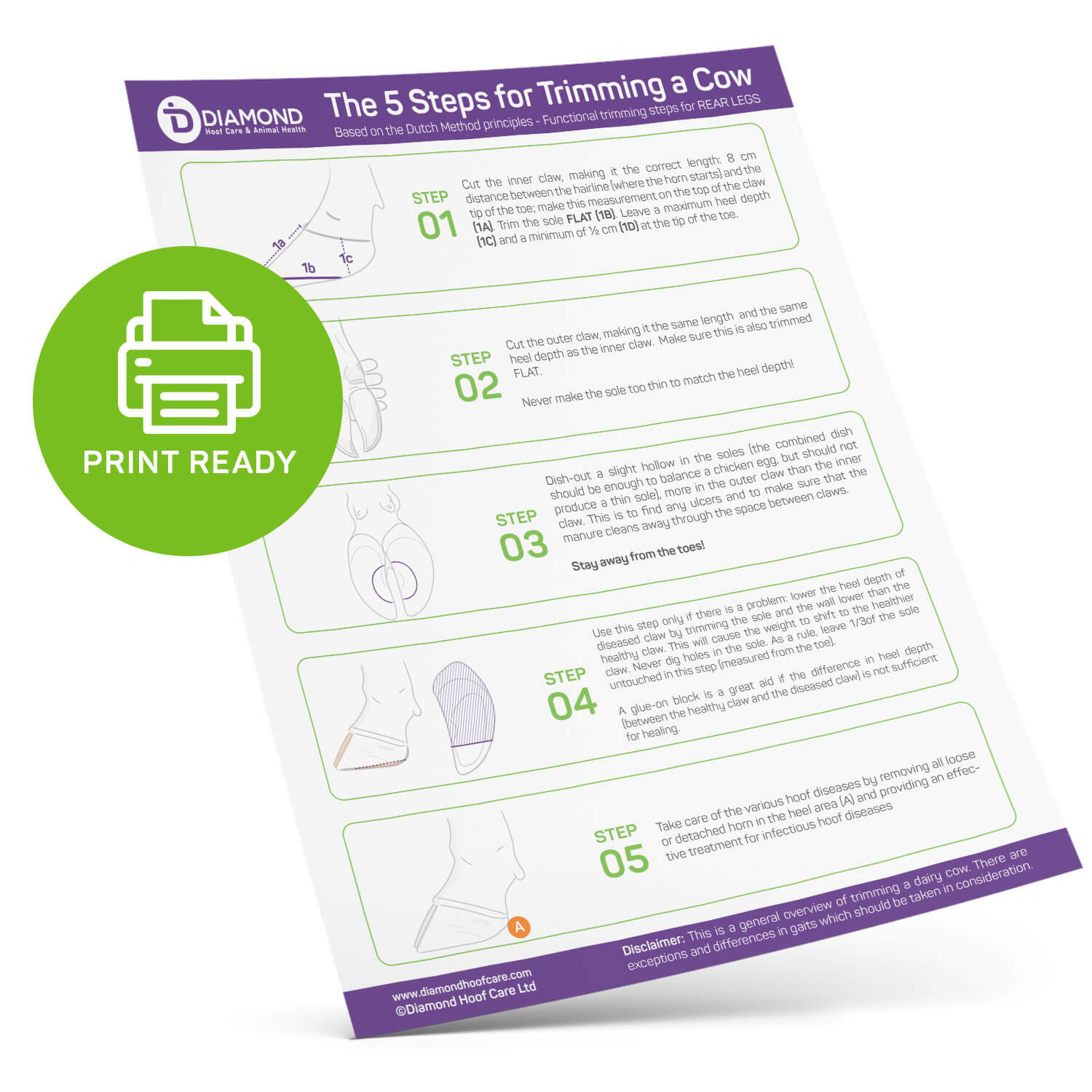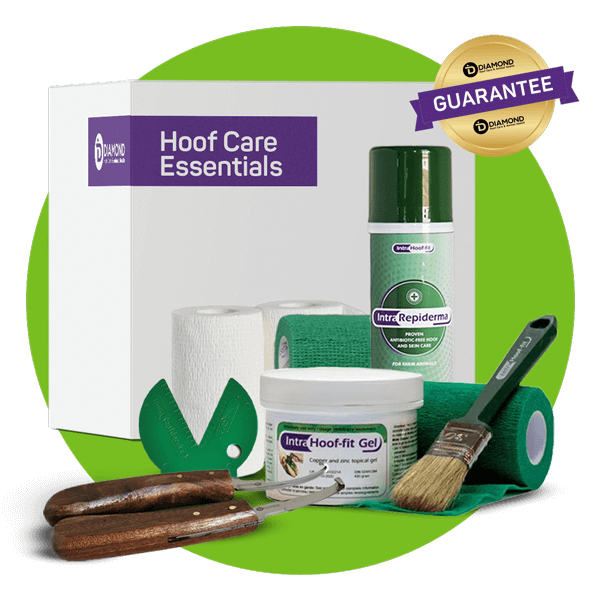Table of Contents
The cloven hoof is a fascinating aspect of animal anatomy that has long captured the attention and curiosity of farmers, scientists, and animal lovers alike. In this post, I will explore this unique feature, its definition, some anatomy, and measurement techniques, and discover which animals proudly display this remarkable characteristic.
Table of Contents
What is a Cloven Hoof?
To truly understand a cloven hoof, we must first comprehend its definition. A cloven hoof is a hoof that is divided into two separate sections or toes. This division occurs due to a specific growth pattern, which creates a split in the middle of the hoof, resulting in a distinct “two-toed” appearance. This feature is primarily observed in many well-known species, such as cows, goats, sheep, and many others.
Origins of the Term “Cloven Hoof”
The term “cloven hoof” comes from the Old English word “cloven,” meaning split or divided. This is precisely what a cloven hoof is – a hoof split into two distinct sections. As a hoof trimmer, I often get asked whether a cow has two claws, hooves, or toes. The answer to all of them is “Yes, probably”. I’ve learned that farmers’ descriptive vocabulary changes depending on the geographic location.
Anatomy of Cloven or Split Hoof
The anatomy of the different hooves is a subject that could fill an entire book – but as a bovine hoof trimmer, I don’t claim to be an expert on anatomy. It is awe-inspiring, though, how God created the animals with different shapes of hooves, and I’m still working with these types of hooves today.

The cloven hoof is a complex structure made up of many tissues, bones, and ligaments. The hoof comprises a hard outer layer known as the hoof wall, which serves as a protective shield for the internal structures. Beneath the hoof wall, we discover a network of soft tissues, including the sensitive laminae and the underlying digital cushion, contributing to the foot’s shock-absorbing capabilities.
Within the hoof, we encounter specialized bone structures known as the phalanges, forming the foundation for the toes. These bones provide structural support and enable the animal to bear its weight efficiently, which is crucial for their locomotion and overall well-being.
For example, regarding the cow hoof, the bone that fits into the horn shoe is called the ‘pedal bone’ or ‘coffin bone’ and is referred to as P3 because of its location—the last one in a series of three. As professional hoof trimmers, we see how this specific bone impacts the sole of hooves.

Functionality and Adaptations
The fascinating functionality and adaptations of the cloven hoof highlight its significance. The division of the hoof into two sections enhances the animal’s stability, allowing it to navigate varied terrains with ease. The cloven hoof acts as a natural grip, ensuring a firm foothold on rugged surfaces, while the two halves provide a wider base, distributing the weight more evenly.
Furthermore, the remarkable adaptations displayed by cloven-hoofed animals contribute to their survival in diverse environments. Animals use their split hooves to help them move around and overcome obstacles in nature. Just think of the Gazelle in the African Savanah or the mountain goat we see in the Rocky Mountains.
If I may go back and make the link to our modern dairy cow – the natural environment has changed, but hoof formation has not. You will see different growth and traction on a concrete floor compared with an animal that lives in pasture (for example, range cows).

Three Animals With Split Hooves
Many species have cloven or split hooves, but I would like to mention only a few examples because I have been offered these to check their hooves at some point during my trimming career.
Cows
When picturing a cloven hoof, the image of a cow often springs to mind. Cows are a perfect example of this quality—obviously, I’m biased because I sometimes dream about hooves after a busy day of trimming. Our bovine friends have each foot divided into two separate toes. These hooves enable cows to graze on a myriad of terrains, exemplifying their adaptability as they effortlessly traverse grassy, sometimes muddy fields and rugged pastures.
In modern dairy farming, cows are kept on hard surfaces like concrete. This affects how their hooves grow and wear—so the art of hoof trimming is important in maintaining healthy cows.

Sheep
Joining cows in the ‘cloven hoof club,’ sheep gracefully showcase this unique feature. These gentle creatures utilize their split hooves to maneuver steep mountainsides and uneven landscapes skillfully, seeking the choicest patches of vegetation.
When I look at my connection with sheep, I see that they were housed on the farm with access to pasture or a straw pack. The hooves’ horns grow differently when on a straw pack or in rugged terrain. Specifically, we see more infectious hoof problems in controlled environments, affecting horn production.
Goats
Known for their adventurous and agile nature, goats are another prominent member of the cloven-hoofed community. With their characteristic two-toed hooves, goats effortlessly ascend precipitous cliffs, seemingly defying gravity. This remarkable adaptation grants them access to secluded areas, where they can graze on foliage that other animals would find inaccessible.
In a barn setting, you can see the ‘true nature of the beast’ because these goats climb on everything. Their hooves seem like magnets that get attached to anything on the farm—I am just about convinced that their split hoof affects how they behave.
The farmers who own sheep and goats contact me regarding hoof tools and care products. The trimming tools we use on cows are also used on these animals. Specifically, the Repiderma is a great product for these types of livestock.
Steps to Measure the Bovine Hoof
To narrow down this article, I will explain the measurements of the cow’s hoof according to the Dutch method. There are certainly other methods of trimming a cow effectively. However, the main reason that I chose to dig into the Dutch method is that I was trained on this method in 1994 by Mr. Pieter Kloosterman, and secondly, it’s so easy to communicate the steps of trimming a cow using this method.

Tools Required
Before you begin measuring, it is important to mention the tools that will be needed for trimming: a solid and safe hoof trimming chute to hold the animal, a nipper or electric grinder for shortening the toes, and a trimmer for trimming the sole of the hoof. Needless to say, a sharp hoof knife is half the job—so make sure you have one! For convenience, our Hoof Care Essentials Kit has the most important tools you’ll need.
My friend and fellow trimmer Vic Daniel, who operates a trimming school called Vic’s Hoof Trimming Course in Ontario, Canada, shared his insight on the five steps and clarified their explanation using the Intra Claw Check.
How to use the Intra Claw Check?
To accurately measure a cow’s hoof, we use the Intra Claw Check only as a tool or guide. It has a few essential measurements that ensure a comprehensive analysis of the cow hoof’s dimensions. The Intra Claw Check simplifies the work of those undertaking hoof care. It is intended to provide standard values associated with normally grown claws and should not be rigidly applied in the case of overgrown or abnormal hooves.

5 Steps to Trim Cheat Sheet
1. Claw Length Measurement
When examining the claw of an average-size Holstein-Friesian cow, you need to start by measuring the length of the claw wall on the inner claw of the hind leg or the outer claw when trimming the front leg. This measuring is based on the Dutch method I have described in the 5 steps to trim a cow downloadable barn sheet.
To get an accurate measurement, you should start at the point where the hard horn begins and measure to the tip of the toe. You can use the Intra Claw Check tool to mark the anterior wall at 75 mm and make a vertical cut at the toe to the sole surface.

2. Toe Thickness Measurement
You can reduce the sole thickness accordingly once the cut to the right length is made. The thickness of the Intra Claw Check is 5 mm, which is used to measure the sole thickness. The average distance from the coronary band to the tip of the claw is around 82 mm, which is accomplished when measuring the 75 mm claw length and 5 mm sole thickness.

3. Hoof Sole vs the Floor Check
Once the correct length of the claw is determined, it is time to trim the adjacent claw and match the claw length and heel height. To measure the balance between the claws effectively, use your Intra Claw Check tool and place it under the bottom part of the hoof, which is what we call the solar surface. This simple step helps you quickly notice if there’s a mismatch in the lengths and heel height of the claws. The goal here is to make sure both claws share the weight evenly, allowing your animal to stand comfortably and naturally.
Both claws’ soles should rest flat against the ground, ensuring even and correct contact and weight bearing, as it should be.
I do want to add a warning in between here: avoid over-trimming. This can happen, for example, when trimming a rear foot and the inner claw is short or low on the heel. In that case, it’s impossible to match up the outer claw because it will end up too thin.

4. Hoof Angle Measurement
Control of the angle between the sole and anterior claw wall. The angle of the Intra Claw Check is set at 50°, allowing easy recognition of the acceptable variation of 45 – 50°. In my experience, keeping the heel height of the inner claw of the rear legs as high as possible is vital. Lowering that heel depth will put more pressure on the outer claw and cause potential problems, such as developing laminitis in cattle.
Both claws’ soles should rest flat against the ground, ensuring even and correct contact and weight bearing, as it should be.


Hoof Care Starter Kit
Conclusion
The cloven-hoofed animals, especially the cow, are unique with their remarkable anatomical features; by understanding the definition and exploring various measurement techniques, we gain deeper insight into the complexities of this awe-inspiring creation. (Yes, I am again biased after trimming cows for over 20 years)
At Diamond Hoof Care, we understand the importance of staying informed and equipped with the best practices in bovine hoof care. Our “Hoof Clips” are loaded with practical information to provide you with expert advice, the latest trends, and inspiring success stories from within the hoof care trade. Whether you’re tending to cows, sheep, goats, horses, or any other animal, we help you elevate your livestock’s well-being. Don’t miss out on the opportunity to enhance your knowledge and support your herd’s health. Sign up to get our Hoof Clips news in your inbox, free of charge, and ensure you’re always one step ahead in dairy hoof health management.
Frequently Asked Questions
Do cloven hoof and split hoof refer to the same thing?
While the terms “cloven hoof” and “split hoof” are often used interchangeably, they essentially refer to the same concept. Both terms denote the division of the hoof into two separate sections.
What is another name for a cloven-hoofed animal?
Cloven-hoofed animals are also part of the “ungulate” mammals. Artiodactyls, or even-toed ungulates, are animals with feet with an even number of digits—such as cows, sheep, goats, deer, and many others, all of whom share the extraordinary characteristic of the cloven hoof.




